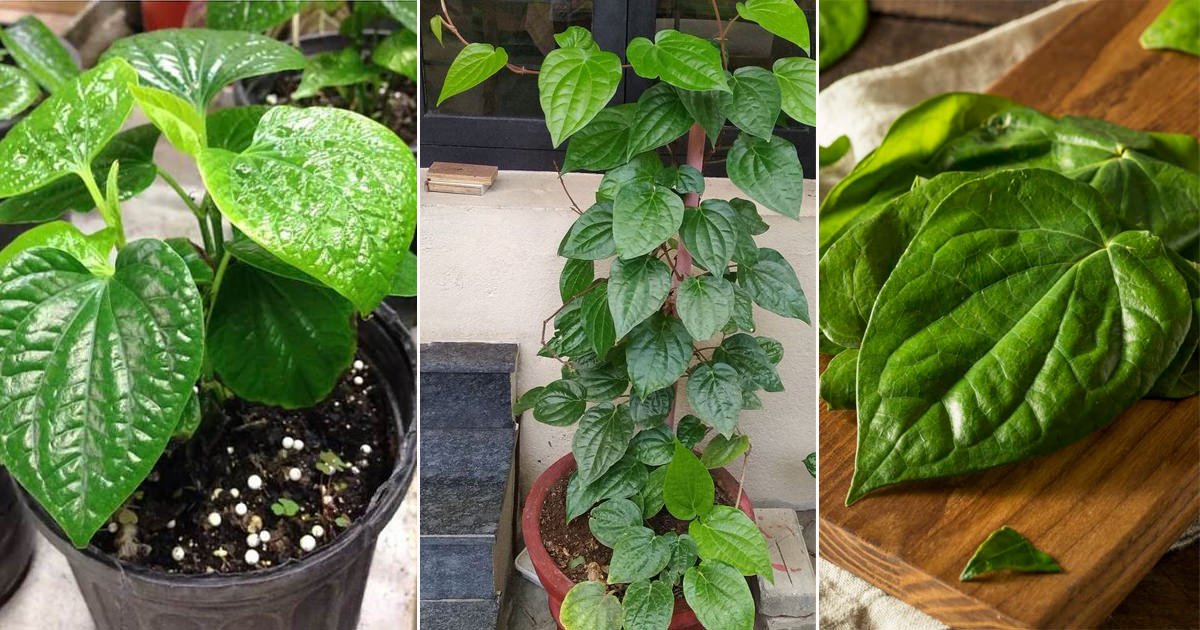Embark on a journey into the world of betel leaf plant care, where scientific knowledge intertwines with captivating storytelling. Discover the secrets to nurturing thriving betel leaf plants, ensuring their optimal growth and well-being.
Delve into the intricacies of soil requirements, ideal light conditions, and optimal temperature ranges that foster the health and vigor of these plants. Explore the art of watering and fertilization, unraveling the delicate balance of moisture and nutrients that sustain their growth.
Cultivation Conditions

Betel leaf plants thrive in specific environmental conditions to produce healthy and flavorful leaves. Understanding these requirements is crucial for successful cultivation.
Soil Requirements:
- Betel leaf plants prefer well-drained, fertile soil with a pH range of 6.0 to 7.0.
- The soil should be rich in organic matter, such as compost or manure, to provide essential nutrients.
Light Conditions:
- Betel leaf plants require bright, indirect sunlight for optimal growth.
- Direct sunlight can scorch the leaves, while insufficient light can result in weak and stunted plants.
- Providing shade during the hottest part of the day can help protect the leaves from sunburn.
Temperature Range:
- Betel leaf plants grow best in warm temperatures ranging from 25 to 30 degrees Celsius (77 to 86 degrees Fahrenheit).
- Temperatures below 15 degrees Celsius (59 degrees Fahrenheit) can inhibit growth and cause leaf damage.
- Temperatures above 35 degrees Celsius (95 degrees Fahrenheit) can lead to heat stress and wilting.
Watering and Fertilization
Proper watering and fertilization are essential for the healthy growth and yield of betel leaf plants. Understanding their specific requirements ensures optimal plant development and maximizes productivity.
Watering
Betel leaf plants require regular watering, but overwatering can lead to root rot. The frequency of watering depends on factors such as soil type, temperature, and humidity. As a general rule, water the plants when the top 2-3 inches of soil feel dry to the touch.
Use lukewarm water and avoid getting the leaves wet to prevent fungal diseases. Water deeply, allowing the water to reach the roots. Do not water too frequently, as waterlogged soil can suffocate the roots.
Fertilization, Betel leaf plant care
Fertilize betel leaf plants every 2-3 weeks during the growing season. Use a balanced fertilizer with an NPK ratio of 10:10:10 or 12:12:12. Avoid over-fertilizing, as this can burn the roots and damage the plant.
Organic fertilizers, such as compost or manure, can also be used to provide nutrients to the plants. Incorporate these fertilizers into the soil around the plants and water well.
Soil Moisture
Maintaining proper soil moisture levels is crucial for betel leaf plants. The soil should be moist but not waterlogged. Check the soil moisture regularly and water the plants accordingly.
Mulching around the plants can help retain soil moisture and suppress weeds. Use organic materials such as straw, wood chips, or compost as mulch.
Propagation and Maintenance: Betel Leaf Plant Care

Betel leaf plants can be easily propagated and maintained with proper care. This section discusses the techniques for propagation, pruning, and trimming, as well as common pests and diseases that affect betel leaf plants and preventive measures.
Propagation
Betel leaf plants can be propagated through stem cuttings or air layering.
- Stem cuttings: Select healthy stems with at least two to three nodes. Cut the stem into 15-20 cm lengths and remove the leaves from the bottom nodes. Insert the cuttings into a well-draining potting mix and keep them moist. The cuttings will develop roots within a few weeks.
- Air layering: This technique involves wounding a stem and covering it with moist sphagnum moss. Roots will develop at the wounded area, and once the roots are well-established, the stem can be cut below the roots and planted in a pot.
Pruning and Trimming
Regular pruning and trimming are essential for maintaining a healthy and productive betel leaf plant. Pruning involves removing old, diseased, or unproductive branches, while trimming involves shaping the plant and removing excess growth.
- Pruning: Remove old, diseased, or unproductive branches at the base of the plant. This will encourage new growth and improve the overall health of the plant.
- Trimming: Trim excess growth to shape the plant and promote bushier growth. Trimming can also be used to control the height of the plant.
Pests and Diseases
Betel leaf plants are susceptible to a few pests and diseases. Common pests include aphids, mealybugs, and spider mites. Common diseases include leaf spot, powdery mildew, and root rot.
- Pests: Aphids, mealybugs, and spider mites can be controlled with insecticidal soap or neem oil. Severe infestations may require the use of chemical insecticides.
- Diseases: Leaf spot, powdery mildew, and root rot can be prevented by providing proper drainage, avoiding overwatering, and using disease-resistant varieties. Fungicides may be necessary to control severe infections.